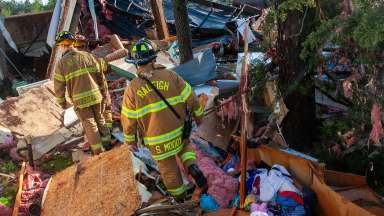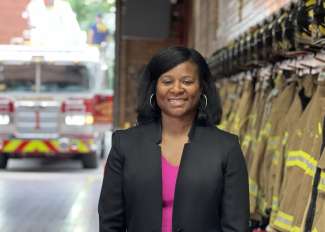Jump To:
Satwana Hurdle’s job is not very visible – until it’s highly visible. As the City of Raleigh’s new assistant director of emergency management, Hurdle promotes a safer community with the capacity to cope with hazards and disasters. The emergency management veteran, who is part of the Raleigh Fire Department, is using risk management principles, hazard identification techniques, and risk analysis to create and foster a robust emergency management and disaster response program for the City.
Hurdle, who joined the City in early June, has worked with public and private sector partners within various levels of government to develop and implement comprehensive emergency preparedness plans and programs. She has 15 years of experience in the field and has held emergency management and continuity of operations positions at FEMA, the U.S. Department of Defense and Wake County, for instance.
At the City, she leads Raleigh Fire’s new Emergency Management Division. The emergency management function used to be part of the City’s Office of Emergency Management and Special Events, but it was moved to the fire department mainly due to Fire Chief Herbert Griffin’s unique knowledge and the increasing demands around special events and nightlife management activities.
“Emergency management is beyond important; it’s essential in keeping our community safe and minimizing the damage caused by natural and man-made disasters,” Griffin said. “The primary element in emergency management is prevention. This means putting into place plans and procedures to help respond quickly and effectively to any emergency.”

